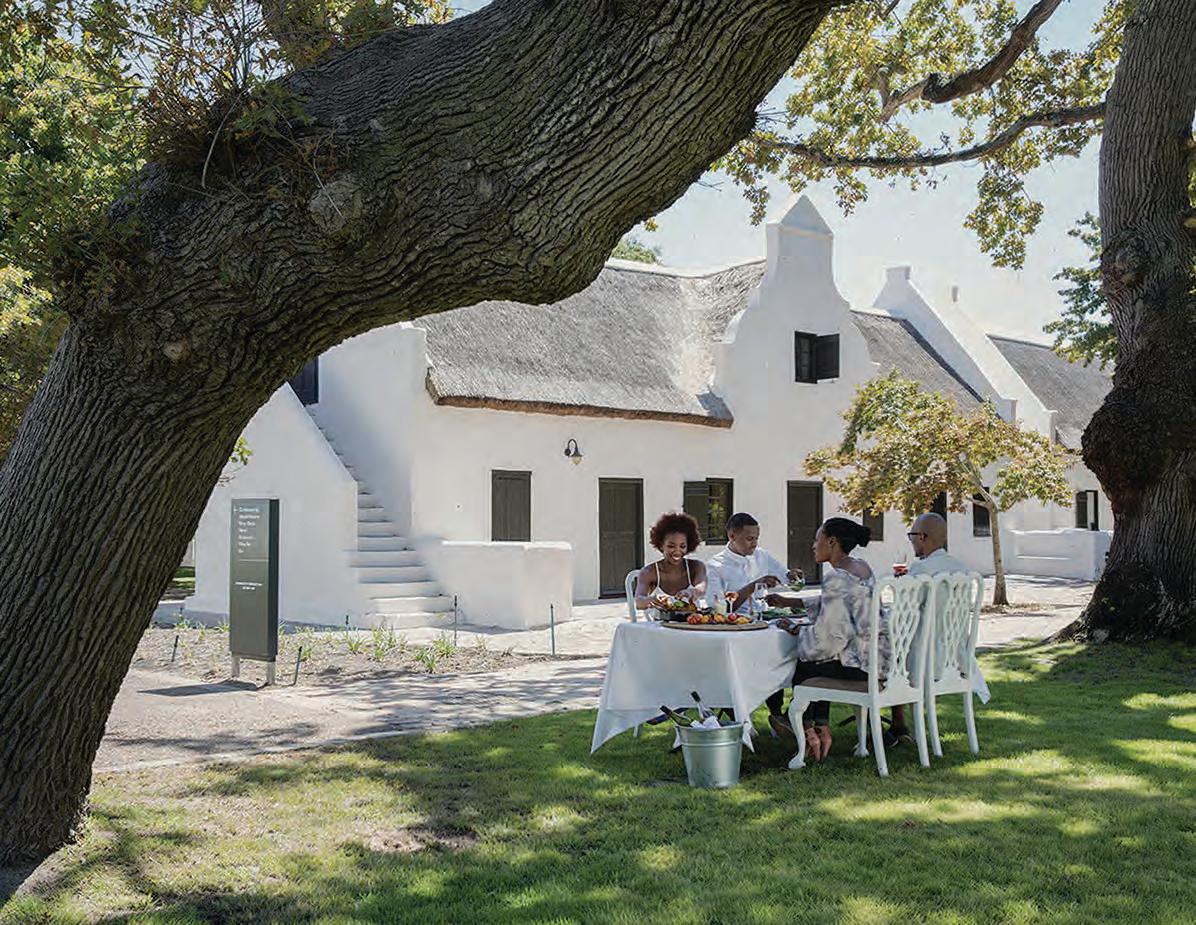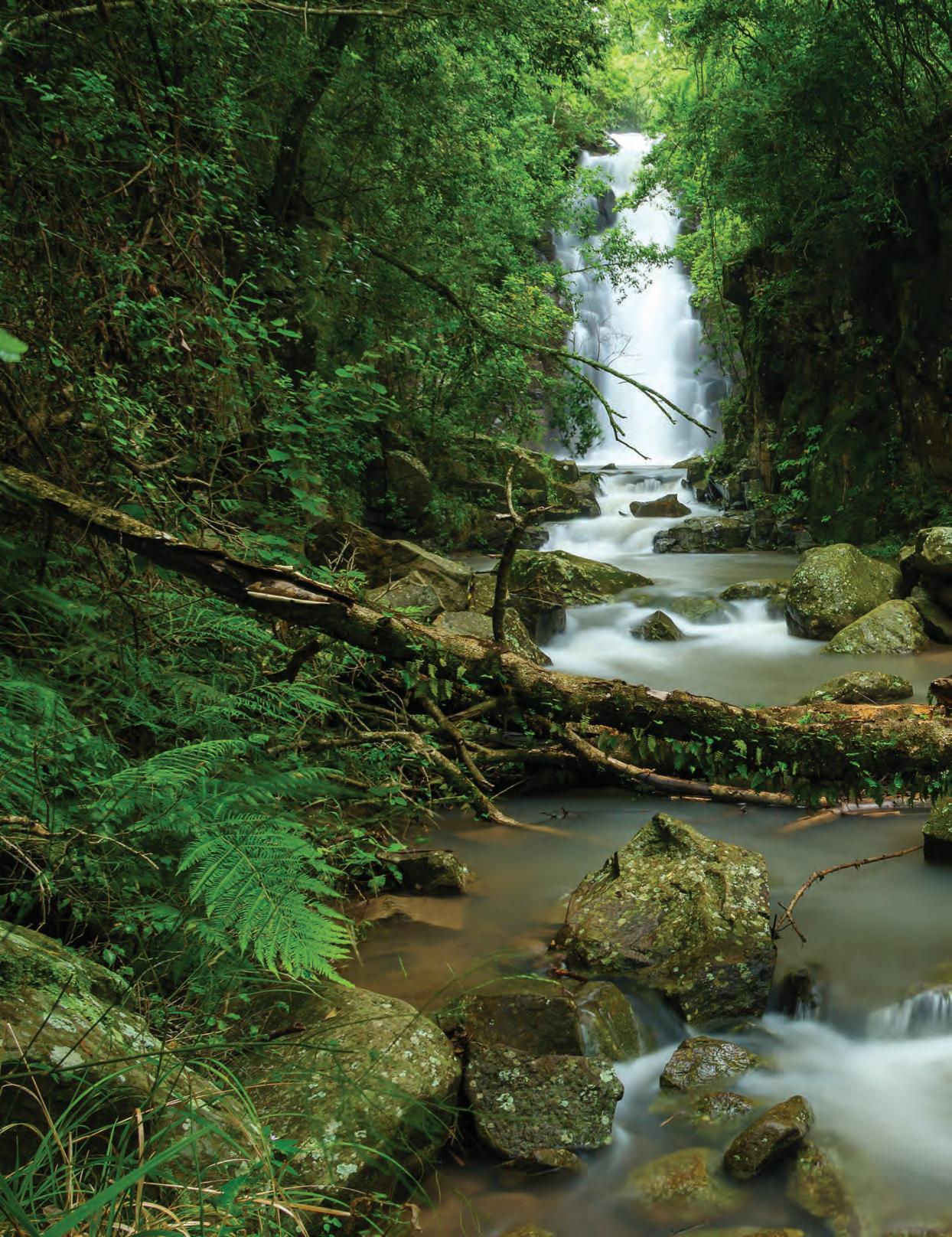
5 minute read
Stellenbosch Wine Routes celebrates half-century of leadership and innovation
Stellenbosch Wine Routes celebrates half-century of leadership and innovation
The Stellenbosch Wine Routes celebrates wine-producing regions in five provinces its 50th anniversary this year, a milestone with 23 recorded wine routes. The develthat also marks the birth of South African opment of wine tourism in South Africa wine tourism. Beyond offering the highest has also led to the transformation of the density of exceptional premium wines in rural landscape in these wine routes, with South Africa, the Stellenbosch Wine Routes state-of-the-art wine estates, graded hotels paved the way for the creation of the coun- and event facilities having been added for try’s wine tourism, an industry that contrib- guests. More than half of member wineries utes R7.2bn to GDP per year. have incorporated food-related experiences into their wine-tourism offering.“The occasion of our 50th comes at a most opportune time,” says Stellenbosch Wine Today, the Stellenbosch Wine Routes comRoutes chairman, Mike Ratcliffe. “The wine prises a myriad of world-class wine tourism industry and indeed, the country, is under- encounters in addition to wine tastings. going one of its most challenging seasons From wine safaris to award-winning gourand reflecting on historic achievements is met affairs, the Stellenbosch Wine Routes important for the inspiration it provides justifiably earns its reputation of being the given the work that awaits us.” biggest visitor attraction outside of Cape Since its first step 50 years ago, the foot- Town. Every year, hundreds of thousands of print of wine tourism has extended to guests traditionally visit the area, which is
Advertisement
a staple of trips to the Western Cape – for both local and international guests. In 2019, the Stellenbosch Wine Routes became a founding member of Visit Stellenbosch, the town’s official Destination Marketing Organisation. This joint initiative is unifying Stellenbosch tourism stakeholders under one umbrella with the objective of growing the tourism and experience economy in Stellenbosch for the benefit of all communities. The same year, the organisation became the first Southern Hemisphere wine region to join the Porto Protocol. Here, it committed to accelerating its focus and efforts on good environmental practice principles and executing projects oriented towards local sustainability. “Stellenbosch’s success is due to the unique combination of several critical factors. These include the quality and number of wineries; the beauty of the surrounding landscape, collaboration; and, availability of cultural tourism that augments wine tourism,” says Ratcliffe. The Stellenbosch wine region has received the most wine awards per capita than any other of its kind in South Africa, underscoring a link between quality of wine and successful wine tourism. “As the first and largest wine route in the country, Stellenbosch Wine Routes will continue to lead the way. Included in our mandate is challenging local, provincial and national government on issues that affect our members and the industry, collectively addressing climate change as a member of

TOURISM NEWS the Porto Protocol and driving the social agenda,” Ratcliffe says. “Stellenbosch recognises the leadership role it must play on climate change and socio-economic issues too. We are committed as the wine and tourism ecosystem of Stellenbosch to drive environmental protection and social cohesion and foster good principles among all our stakeholders.” On the effects of the pandemic, Ratcliffe says it demonstrated once again how in times of crisis communities pull together. The industry itself has faced seemingly insurmountable crises in the past and risen to meet the challenges every time. Vinpro estimates that more than R2.5bn in revenue was lost between March and July 2020, with most losses incurred at the tasting room. “The impact to profitability, employment and the financial stability of the communities that are dependent on this sector cannot be underestimated either,” says Ratcliffe. Quick off the mark when COVID-19 arrived on our shores, Stellenbosch rallied fervently to support economically vulnerable people living in and around the winelands. Among the initiatives was Stellenbosch Unite, through which last year it fed 690 000 people with 207 000 litres of soup and 36 800 food parcels. This year, it co-ordinated the donation of hundreds of care packages to staff across all roles in the medical sector, including nurses, cleaners, porters, security guards, administrative officers, clinic workers and support staff. Stellenbosch was also the first destination in sub-Saharan Africa to implement World Travel and Tourism Council-approved stringent health and hygiene safety protocols for the wellbeing of staff and guests. “As a wine route, we continue to put a firm focus on

ensuring our wine and tourism eco-system continues to implement these protocols consistently for the safety of our staff and guests,” Ratcliffe says. The Stellenbosch Wine Routes was founded by a now-famous fearless threesome who sought to change the existing status quo in the 1960s of grapes being sent to co-ops to produce the final product. At the time, the industry was controlled by KWV and co-operatives due to oversupply and vineyard owners could not sell wine under their own labels. During a trip to Burgundy in 1969, Frans Malan (Simonsig) and Niel Joubert (Spier) discovered the famous Routes des Vins at Morey St Denis and saw the possibility of a similar scenario being established in Stellenbosch. Returning home, the two regrouped with Spatz Sperling (Delheim) to form the new organisation and so the Stellenbosch Wine Routes was officially launched in 1971. The three founding members were soon joined by Groenland, Koopmanskloof, Blaauwklippen, Verdun, Overgaauw, Neethlingshof, Hazendal, Uiterwyk, Muratie, Mooiplaas, Hartenberg and Koelenhof. At its inception, the Stellenbosch Wine Routes created an organised network of wine farms offering cellar door tastings and, in some cases, light meals. The consumer could then drive from farm to farm to taste and buy wine. The law of the day prescribed that wine had to be sold in cases of 12. Today, the wine route has five sub-routes offering diverse wine tourism experiences, from all-inclusive luxury wine estates with tasting rooms, restaurants, and accommodation to small boutique wineries. It currently has over 120 wine and grape producer members within the boundaries of Stellenbosch Wine of Origin classification.
www.wineroute.co.za www.visitstellenbosch.org


What’s News in CONSERVATION & ENVIRONMENT?











